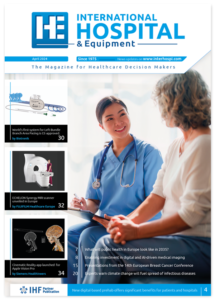Self-powered paper-based ‘SPEDs’ may lead to new medical-diagnostic tools
A new medical-diagnostic device made out of paper detects biomarkers and identifies diseases by performing electrochemical analyses – powered only by the user’s touch – and reads out the color-coded test results, making it easy for non-experts to understand.
“You could consider this a portable laboratory that is just completely made out of paper, is inexpensive and can be disposed of through incineration,” said Ramses V. Martinez, an assistant professor of industrial and biomedical engineering at Purdue University. “We hope these devices will serve untrained people located in remote villages or military bases to test for a variety of diseases without requiring any source of electricity, clean water, or additional equipment.”
The self-powered, paper-based electrochemical devices, or SPEDs, are designed for sensitive diagnostics at the “point-of-care,” or when care is delivered to patients, in regions where the public has limited access to resources or sophisticated medical equipment.
The test is initiated by placing a pinprick of blood in a circular feature on the device, which is less than two-inches square. SPEDs also contain “self-pipetting test zones” that can be dipped into a sample instead of using a finger-prick test. The top layer of the SPED is fabricated using untreated cellulose paper with patterned hydrophobic “domains” that define channels that wick up blood samples for testing. These “microfluidic channels” allow for accurate assays that change colour to indicate specific testing results. A machine-vision diagnostic application also was created to automatically identify and quantify each of these “colorimetric” tests from a digital image of the SPED, perhaps taken with a cellphone, to provide fast diagnostic results to the user and to facilitate remote-expert consultation.
The bottom layer of the SPED is a “triboelectric generator,” or TEG, which generates the electric current necessary to run the diagnostic test simply by rubbing or pressing it. The researchers also designed an inexpensive handheld device called a potentiostat, which is easily plugged into the SPED to automate the diagnostic tests so that they can be performed by untrained users. The battery powering the potentiostat can be recharged using the TEG built into the SPEDs. “To our knowledge, this work reports the first self-powered, paperbased devices capable of performing rapid, accurate, and sensitive electrochemical assays in combination with a low-cost, portable potentiostat that can be recharged using a paper-based TEG,” Martinez said.
Purdue University https://www.purdue.edu/newsroom/releases/2017/Q3/self-powered-paper-based-speds-may-lead-to-new-medical-diagnostic-tools.html

